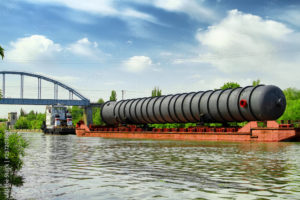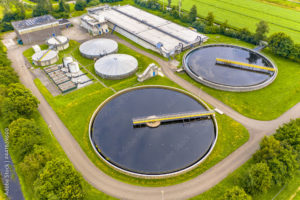When it comes to choosing a sizing agent for paper mills, one option stands out above the rest – Alkyl Ketene Dimer (AKD). This versatile compound has quickly become the preferred choice for many paper manufacturers due to its numerous benefits and unmatched performance. With its ability to improve paper strength, enhance water resistance, and increase sizing efficiency, it’s no wonder that AKD has gained such popularity in the industry.
AKD has proven to be highly effective in improving the printability and runnability of paper, resulting in smoother and more consistent production processes. Its unique molecular structure allows it to form a strong and durable bond with cellulose fibers, ensuring excellent retention and uniformity throughout the paper surface. This not only adds strength and stability to the paper but also enhances its resistance to water, oil, and other liquids.
Furthermore, AKD offers a cost-effective solution for paper mills, as it requires lower dosages compared to alternative sizing agents. This translates into significant cost savings and improved overall efficiency for manufacturers.
In summary, AKD shines as the preferred sizing agent for paper mills, providing enhanced paper characteristics, improved production processes, and cost-effective advantages. With its exceptional performance and numerous benefits, it’s no wonder AKD has become a staple in the industry.
Importance of sizing agents in paper manufacturing
Sizing agents play a crucial role in paper manufacturing, impacting both the production process and the quality of the final product. Here’s why they are important:
- Control of Ink Absorption and Spread: Sizing agents reduce the paper’s tendency to absorb liquids, which is particularly important for printing and writing papers. Without proper sizing, ink would spread uncontrollably, resulting in poor print quality.
- Improved Strength and Durability: Sizing agents can enhance the strength and durability of paper. They contribute to the paper’s resistance to tearing and wear, which is essential for papers that are intended for long-term use or handling.
- Moisture Resistance: Sizing agents make the paper more resistant to moisture. This is crucial for packaging materials that need to withstand varying humidity levels and for documents that require longevity, like legal papers or archival materials.
- Enhanced Surface Properties: The application of sizing agents can modify the surface properties of the paper, making it more suitable for specific printing techniques or writing. It can also impact the smoothness and gloss of the paper.
- Process Efficiency: In the paper manufacturing process, sizing agents help in controlling the paper’s porosity and surface conditions, which can lead to more efficient printing and converting operations.
- Customization: Different types of sizing agents allow for the customization of paper properties for specific applications. For example, certain agents might be used to create water-resistant paper for outdoor use, while others might be designed for high-quality printing.
- Environmental Considerations: Modern developments in sizing agents also consider environmental impacts. Eco-friendly and biodegradable sizing agents are increasingly being used to reduce the ecological footprint of paper production.
Overall, sizing agents are essential for producing high-quality paper that meets specific requirements and performs well under various conditions. Their use is a key factor in the versatility and functionality of modern paper products.
Comparison of AKD with other sizing agents
Alkyl Ketene Dimer (AKD) is one of the commonly used sizing agents in paper manufacturing, and it can be compared with other sizing agents like Rosin and ASA (Alkenyl Succinic Anhydride) based on several factors:
- Chemical Composition and Mechanism:
- AKD: It is a neutral sizing agent, forming a hydrophobic layer on the fiber surface. It reacts with hydroxyl groups of cellulose, resulting in better sizing effect under neutral or slightly alkaline conditions.
- Rosin: A traditional sizing agent, often used with aluminum sulfate to create an acidic environment. Rosin reacts with paper fibers and the alum to form a hydrophobic surface but is less effective at higher pH levels.
- ASA: Like AKD, ASA is a synthetic sizing agent used in neutral or alkaline papermaking. It reacts more rapidly with cellulose fibers than AKD, providing immediate water resistance.
- Effectiveness in Different pH Levels:
- AKD: Works best in neutral or slightly alkaline conditions and is less effective in acidic environments.
- Rosin: Optimal in acidic conditions and its effectiveness decreases in neutral or alkaline pH.
- ASA: Effective in neutral or alkaline conditions, similar to AKD.
- Application in Papermaking:
- AKD: Widely used in high-quality writing and printing papers, especially where high degrees of sizing and brightness are needed.
- Rosin: Common in newsprint and other lower-grade papers where high brightness is not a priority.
- ASA: Often used in packaging and board grades due to its quick reaction time and good performance under varying conditions.
- Environmental Impact:
- AKD: Considered environmentally friendly due to its biodegradability and the fact that it does not generate acidic waste.
- Rosin: Has environmental concerns due to the acidic conditions required for its effectiveness.
- ASA: Similar to AKD in terms of environmental friendliness, but its quick reaction can lead to problems if not carefully managed in the papermaking process.
- Cost and Efficiency:
- AKD: Generally more expensive than rosin but cost-effective considering its lower application rate and high efficiency in neutral conditions.
- Rosin: Less expensive but may require more additives like alum to be effective.
- ASA: Costs are comparable to AKD, but it can be more efficient due to its rapid reaction with fibers.
- Paper Quality:
- AKD: Produces high-quality papers with good strength, brightness, and printing properties.
- Rosin: Suitable for lower-grade papers and can affect the brightness negatively.
- ASA: Good for high-strength paper requirements and does not significantly affect brightness.
In summary, AKD is favored for high-quality and environmentally friendly paper production under neutral or alkaline conditions, while rosin is more suited for acidic conditions and lower-grade papers. ASA offers a balance with quick reactivity and suitability for neutral to alkaline conditions, often used in packaging and board grades. The choice of sizing agent depends on the specific requirements of the paper product, cost considerations, and environmental impact.
Advantages of AKD as a sizing agent
Alkyl Ketene Dimer (AKD) is a widely used sizing agent in paper manufacturing, and it offers several advantages:
- Effective in Neutral and Alkaline Conditions: AKD is particularly effective under neutral or slightly alkaline pH levels, which is beneficial as many modern papermaking processes operate in these conditions. This allows for less corrosion in machinery and reduced environmental impact compared to acidic sizing agents.
- Improved Paper Quality: AKD contributes to better paper quality. It enhances the strength, durability, and printability of the paper. The papers sized with AKD typically have good surface properties, which is essential for high-quality printing and writing papers.
- Environmental Friendliness: AKD is considered more environmentally friendly compared to traditional acidic sizing agents like rosin. It doesn’t require acidic conditions for its effectiveness, leading to less chemical waste and lower environmental impact. Also, AKD is biodegradable.
- Long-Term Stability: Papers treated with AKD exhibit excellent long-term aging stability. This makes them suitable for archival quality papers where longevity and preservation are crucial.
- Reduced Fiber Loss: In the papermaking process, AKD reduces fiber loss by improving the retention of fines and fillers. This leads to better resource efficiency and cost savings.
- Resistance to Water and Other Liquids: AKD imparts superior water resistance to paper, making it suitable for applications where moisture resistance is important, such as in packaging materials and labels.
- Compatibility with Various Additives: AKD is generally compatible with other papermaking chemicals and additives, which makes it versatile and easy to integrate into various paper production processes.
- Low Application Amount Needed: Compared to other sizing agents, AKD is effective at lower dosage levels, which can be cost-effective in the long run despite its higher initial cost compared to traditional sizing agents.
- No Adverse Effect on Brightness and Whiteness: AKD does not significantly affect the brightness and whiteness of paper, which is crucial for high-quality printing and writing papers.
- Improved Machine Runnability: The use of AKD can enhance the runnability of papermaking machines due to its effectiveness at neutral to alkaline pH levels, reducing corrosion and wear on the equipment.
Overall, AKD is a preferred choice in modern paper manufacturing for producing high-quality, environmentally friendly, and durable paper products, especially where neutral or alkaline processes are used.
AKD sizing process in paper mills
The Alkyl Ketene Dimer (AKD) sizing process in paper mills involves several steps to effectively apply this sizing agent to paper. The process is integrated into the paper manufacturing workflow, usually during the wet end of the papermaking process. Here’s an overview of how it typically works:
- Preparation of AKD Emulsion:
- Mixing AKD with Water and Emulsifiers: AKD, which is waxy and solid at room temperature, is emulsified in water with the help of emulsifiers. This emulsification process is crucial as it converts AKD into a form that can be easily applied to the paper fibers.
- Temperature Control: The emulsification process requires careful temperature control, as AKD needs to be heated above its melting point (typically around 50°C) to form a stable emulsion.
- Addition to the Pulp Stock:
- Point of Addition: The AKD emulsion is added to the pulp stock in the wet end of the paper machine. The exact point of addition can vary but is typically after the pulp has passed through screens and cleaners and before the paper machine headbox.
- Dosage Control: The amount of AKD emulsion added depends on the desired level of sizing and the type of paper being produced. This is controlled precisely to ensure optimal sizing without overuse of chemicals.
- Retention and Distribution:
- Retention Aids: Retention aids may be added to the pulp to improve the retention of AKD on the fibers. This ensures that the AKD is efficiently held onto the fibers and not lost in the water circuit.
- Mixing: Adequate mixing is required to ensure uniform distribution of AKD throughout the pulp.
- Curing Process:
- Chemical Reaction: Once AKD is applied to the fibers, it begins to react chemically with the cellulose, forming a hydrophobic layer. This reaction is known as “curing.”
- Time and Temperature: The curing of AKD is a time and temperature-dependent process. Higher temperatures, like those in the drying section of the paper machine, accelerate the curing.
- Paper Formation and Drying:
- Sheet Formation: The treated pulp then continues through the paper machine, where it is formed into a sheet.
- Drying Section: In the drying section, the paper is heated, which not only removes water but also facilitates the curing of AKD, ensuring that the sizing agent is firmly bonded to the fibers.
- Quality Control:
- Testing: After the paper is made, it undergoes various tests to ensure that the sizing has been effective. This includes tests for water resistance, ink absorption, and overall paper quality.
- Environmental Considerations:
- Effluent Treatment: The papermaking process, including AKD sizing, generates effluent that needs to be treated before discharge. Modern mills have efficient effluent treatment plants to minimize environmental impact.
The AKD sizing process is a critical component in producing water-resistant and high-quality paper, especially for printing and writing purposes. It requires precise control of chemical dosing, temperature, and process conditions to achieve the desired paper properties.
Factors to consider when using AKD as a sizing agent
When using Alkyl Ketene Dimer (AKD) as a sizing agent in paper manufacturing, several factors must be considered to ensure effective sizing and optimal paper quality. These factors include:
- pH Level of the Pulp: AKD is most effective in a neutral or slightly alkaline environment (pH 7-9). The pH level of the pulp significantly influences the sizing efficiency and the final properties of the paper.
- Consistency of AKD Emulsion: The AKD emulsion should be consistent and stable, with the correct particle size and distribution. An unstable emulsion can lead to poor sizing efficiency and uneven distribution on the paper fibers.
- Temperature: The temperature of the pulp and process environment affects the reactivity of AKD. The curing process of AKD is temperature-dependent, and adequate heat is required to facilitate complete reaction and bonding with the cellulose fibers.
- Amount and Timing of AKD Addition: The dosage of AKD and the point at which it is added to the pulp are critical. Overdosing can lead to sizing issues and increased costs, while underdosing may result in insufficient sizing. The timing of AKD addition should be optimized to ensure maximum retention and effectiveness.
- Retention Aids: The use of retention aids can improve the retention of AKD on the fibers, enhancing sizing efficiency. The type and amount of retention aids should be carefully selected based on the specific papermaking conditions.
- Fiber Type and Quality: The type and quality of fibers used in the papermaking process can influence the effectiveness of AKD sizing. Different fibers may react differently with AKD, affecting the sizing outcome.
- Water Hardness and Ionic Content: The hardness and ionic composition of the process water can impact the stability of the AKD emulsion and its reactivity with the fibers. Soft water is generally preferred for better AKD sizing efficiency.
- Machine Speed and Papermaking Conditions: The speed of the paper machine and other papermaking conditions, like drying temperature and time, influence the curing of AKD and the final sizing properties of the paper.
- Paper Grade and End-Use Requirements: The specific requirements for the paper grade being produced, such as strength, printability, and water resistance, should guide the use of AKD. Different end uses may require different levels and types of sizing.
- Environmental Considerations: The environmental impact of AKD usage, including its handling, storage, and the treatment of process effluents, should be considered, ensuring compliance with environmental regulations and sustainability practices.
- Interaction with Other Paper Chemicals: AKD may interact with other chemicals used in the papermaking process. It’s important to understand these interactions to avoid negative effects on the paper quality or the efficiency of the sizing process.
By carefully considering these factors, paper manufacturers can optimize the use of AKD as a sizing agent to produce high-quality paper with the desired properties.
Common challenges and troubleshooting in AKD sizing
Alkyl Ketene Dimer (AKD) sizing in paper manufacturing can sometimes present challenges that need to be identified and addressed promptly. Understanding these common issues and their troubleshooting methods is crucial for maintaining the quality of paper production. Here are some of the challenges and their respective solutions:
- Inadequate Sizing (Low Water Resistance):
- Cause: This can be due to insufficient AKD dosage, poor retention of AKD, inadequate curing, or unfavorable pH levels.
- Solution: Increase the AKD dosage, optimize retention aids, ensure proper curing by adjusting drying temperatures, and maintain the pH at an optimal level for AKD sizing (usually neutral to slightly alkaline).
- Poor Emulsion Stability:
- Cause: Instability in AKD emulsion can lead to uneven sizing. Causes include incorrect emulsion preparation, improper storage, or issues with the emulsifying agents.
- Solution: Check and adjust the emulsion preparation process, ensure proper storage conditions, and review the choice and dosage of emulsifiers.
- Deposits on Paper Machine:
- Cause: Excessive AKD, interactions with other chemicals, or poor retention can lead to deposits on machinery.
- Solution: Optimize AKD dosage, improve retention, and assess interactions with other chemicals. Regular cleaning and maintenance of the equipment also help.
- Delayed Curing:
- Cause: If AKD does not react sufficiently with the cellulose fibers, it can lead to delayed curing.
- Solution: Increase drying temperatures and times, and ensure the paper has adequate contact with heat sources in the drying section.
- Variability in Paper Quality:
- Cause: Fluctuations in AKD application, changes in pulp properties, or inconsistent papermaking conditions.
- Solution: Standardize and control the AKD application process, monitor pulp quality, and maintain consistent papermaking conditions.
- Foaming Issues:
- Cause: Excessive use of AKD or certain types of emulsifiers can cause foaming in the papermaking process.
- Solution: Adjust the AKD and emulsifier levels, and consider using defoaming agents if necessary.
- Environmental Compliance:
- Cause: Disposal of effluents containing AKD or its by-products might not meet environmental regulations.
- Solution: Implement effective waste treatment processes and ensure compliance with environmental standards.
- Impact on Paper Properties:
- Cause: Overuse of AKD can affect the paper’s printability, brightness, or other desired characteristics.
- Solution: Carefully balance AKD dosage to achieve the desired sizing without compromising other paper properties.
- Interactions with Other Paper Chemicals:
- Cause: AKD might interact with other chemicals used in the papermaking process, leading to unexpected results.
- Solution: Review and adjust the chemical composition of the pulp mixture, considering all interactions.
- Cost Management:
- Cause: Inefficient use of AKD can lead to increased costs.
- Solution: Optimize AKD usage to achieve effective sizing at minimal cost, and consider process adjustments for better chemical efficiency.
Regular monitoring, quality control tests, and a deep understanding of the papermaking process are key to effectively troubleshooting and overcoming these challenges in AKD sizing.
Environmental impact of AKD in paper production
The environmental impact of using Alkyl Ketene Dimer (AKD) in paper production is generally considered to be relatively low, especially when compared with traditional acidic sizing agents. However, there are still several environmental aspects to consider:
- Biodegradability: AKD is known to be biodegradable. This is a significant advantage over some older sizing agents, as it reduces the long-term environmental impact of paper waste and effluent.
- Neutral to Alkaline pH: AKD works effectively in neutral to slightly alkaline pH conditions. This is beneficial because it aligns with more environmentally friendly papermaking processes, reducing the need for acid-based chemistry which can be more harmful to the environment.
- Reduced Corrosion and Equipment Wear: The neutral to alkaline conditions required for AKD use lead to less corrosion in paper mill equipment. This not only extends the life of the equipment but also reduces the environmental footprint associated with manufacturing and disposing of machinery.
- Reduction in Total Chemical Usage: Because AKD is effective in small quantities and has a strong sizing effect, it can reduce the overall chemical load in paper production. This reduction can lead to less chemical waste and effluent.
- Water Usage and Treatment: While AKD itself is not particularly harmful, the paper production process uses large quantities of water. The effluent, which may contain traces of AKD and other chemicals, needs to be properly treated before being released to ensure it does not harm aquatic ecosystems.
- Air Emissions: The production and application of AKD, like many industrial processes, can result in air emissions, including volatile organic compounds (VOCs). It’s important for paper mills to have proper emission control systems in place.
- Handling and Storage: AKD needs to be handled and stored properly to minimize environmental risks. Spills or improper disposal can lead to soil or water contamination.
- Energy Consumption: The production of AKD and its application in paper manufacturing involve energy consumption. The environmental impact of this energy use depends largely on the source of the energy (e.g., fossil fuels vs. renewable sources).
- Waste Management: Waste generated in the production of AKD and during its application in paper mills should be managed responsibly to minimize environmental impacts.
- Sustainable Practices and Regulations: Many paper manufacturers are moving towards more sustainable practices, including the use of eco-friendly chemicals like AKD. Compliance with environmental regulations also helps minimize the ecological footprint of paper production.
In summary, while AKD is considered more environmentally friendly than many traditional paper sizing agents, its use is not without environmental implications. Proper management practices and adherence to environmental regulations are essential to minimize the impact of AKD in paper production.
AKD sizing agent suppliers and availability
In Indonesia, several notable companies supply AKD (Alkyl Ketene Dimer) sizing agents, which are crucial for paper production. One of the primary suppliers is Kemira, a Finnish company with a strong global presence in the paper industry. Kemira is known for its robust manufacturing processes and focus on research and development, producing AKD sizing agents that are recognized for their performance and environmental attributes.
Another supplier is MFF Chemicals, which provides a range of paper sizing chemicals, including AKD. They offer products like Bansize 1000 and Bansize 2000, which are AKD emulsion internal sizes designed for alkaline internal sizing. MFF Chemicals is committed to innovation and offers solutions that improve water resistance and other qualities of paper.
These suppliers are part of a global network of companies that specialize in chemical solutions for the paper industry, focusing on sustainability, innovation, and customer satisfaction. Their AKD sizing agents play a vital role in enhancing the quality and performance of paper products.
For specific details on availability, pricing, or distribution channels in Indonesia, you would need to contact the suppliers directly. Kemira and MFF Chemicals likely have distribution networks or partnerships in Indonesia to cater to the local paper manufacturing industry.








